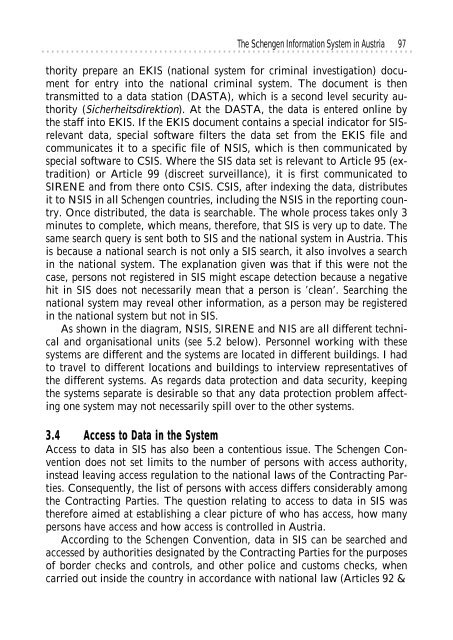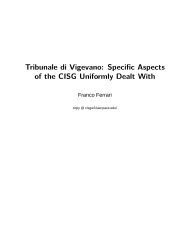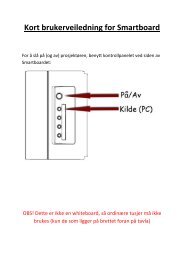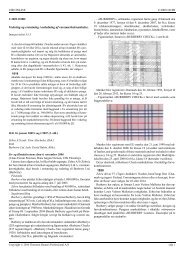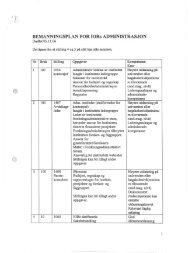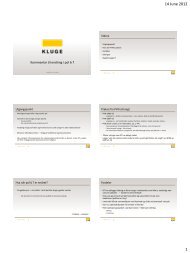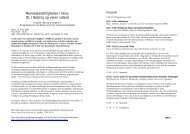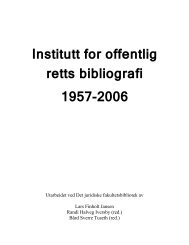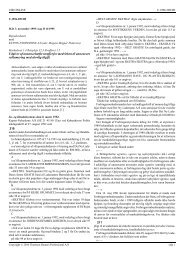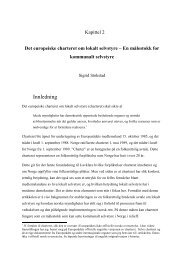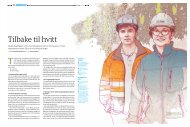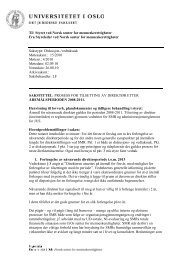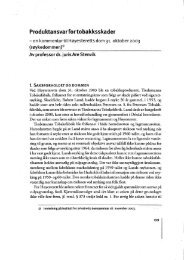Lee A. Bygrave (red.) YULEX 2002 - Universitetet i Oslo
Lee A. Bygrave (red.) YULEX 2002 - Universitetet i Oslo
Lee A. Bygrave (red.) YULEX 2002 - Universitetet i Oslo
You also want an ePaper? Increase the reach of your titles
YUMPU automatically turns print PDFs into web optimized ePapers that Google loves.
............................................................................<br />
The Schengen Information System in Austria 97<br />
thority prepare an EKIS (national system for criminal investigation) document<br />
for entry into the national criminal system. The document is then<br />
transmitted to a data station (DASTA), which is a second level security authority<br />
(Sicherheitsdirektion). At the DASTA, the data is ente<strong>red</strong> online by<br />
the staff into EKIS. If the EKIS document contains a special indicator for SISrelevant<br />
data, special software filters the data set from the EKIS file and<br />
communicates it to a specific file of NSIS, which is then communicated by<br />
special software to CSIS. Where the SIS data set is relevant to Article 95 (extradition)<br />
or Article 99 (discreet surveillance), it is first communicated to<br />
SIRENE and from there onto CSIS. CSIS, after indexing the data, distributes<br />
it to NSIS in all Schengen countries, including the NSIS in the reporting country.<br />
Once distributed, the data is searchable. The whole process takes only 3<br />
minutes to complete, which means, therefore, that SIS is very up to date. The<br />
same search query is sent both to SIS and the national system in Austria. This<br />
is because a national search is not only a SIS search, it also involves a search<br />
in the national system. The explanation given was that if this were not the<br />
case, persons not registe<strong>red</strong> in SIS might escape detection because a negative<br />
hit in SIS does not necessarily mean that a person is ’clean’. Searching the<br />
national system may reveal other information, as a person may be registe<strong>red</strong><br />
in the national system but not in SIS.<br />
As shown in the diagram, NSIS, SIRENE and NIS are all different technical<br />
and organisational units (see 5.2 below). Personnel working with these<br />
systems are different and the systems are located in different buildings. I had<br />
to travel to different locations and buildings to interview representatives of<br />
the different systems. As regards data protection and data security, keeping<br />
the systems separate is desirable so that any data protection problem affecting<br />
one system may not necessarily spill over to the other systems.<br />
3.4 Access to Data in the System<br />
Access to data in SIS has also been a contentious issue. The Schengen Convention<br />
does not set limits to the number of persons with access authority,<br />
instead leaving access regulation to the national laws of the Contracting Parties.<br />
Consequently, the list of persons with access differs considerably among<br />
the Contracting Parties. The question relating to access to data in SIS was<br />
therefore aimed at establishing a clear picture of who has access, how many<br />
persons have access and how access is controlled in Austria.<br />
According to the Schengen Convention, data in SIS can be searched and<br />
accessed by authorities designated by the Contracting Parties for the purposes<br />
of border checks and controls, and other police and customs checks, when<br />
carried out inside the country in accordance with national law (Articles 92 &


